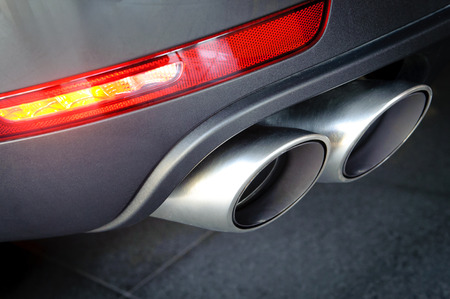1. Introduction: The Tech Race in Today’s Cars
If you’ve set foot in a dealership lately or even just scrolled through auto ads online, you’ll notice that the latest buzz is all about technology and safety. From advanced driver-assistance systems to giant infotainment screens, today’s cars are rolling showcases of innovation. In America, where driving is part of our daily routine and often a reflection of personal style, these rapid advancements are shifting the way we think about buying new vehicles. It’s not just about horsepower or fuel economy anymore—it’s about whether your car can keep up with your smartphone and protect you with features once reserved for luxury models. As technology evolves at breakneck speed, more Americans are asking themselves: Is now the right time to invest in a new car just for the latest tech and safety perks?
Driving Impressions: How Modern Features Change the Road
When you slide behind the wheel of a brand-new car loaded with cutting-edge technology, the driving experience is immediately different from what you might remember in an older ride. For many American drivers, features like adaptive cruise control and lane-keeping assist are no longer just “nice-to-haves”—they’re changing the way we interact with traffic, especially on highways and during long commutes.
Adaptive cruise control (ACC) stands out as a game-changer for freeway driving. Picture yourself hitting I-95 or cruising down Route 66—ACC automatically adjusts your speed to keep a safe distance from the car ahead, letting you relax your foot from the pedal without sacrificing control or safety. The system’s ability to handle stop-and-go traffic makes it especially appealing for daily commuters navigating rush hour in cities like Los Angeles or Chicago.
Lane-keeping assist is another feature that’s reshaping driver confidence. If you’ve ever experienced fatigue on a cross-country road trip or even just lost focus for a second during a late-night drive, lane-keeping systems gently nudge the steering wheel to help keep you centered. This isn’t about taking your hands off the wheel—its about having an extra set of digital eyes watching your blind spots and keeping you in check, which is especially reassuring on winding back roads or busy multi-lane highways.
The connected infotainment systems in today’s vehicles add another layer of convenience and safety. Whether youre syncing up Apple CarPlay, using Android Auto for navigation, or calling up your favorite Spotify playlist hands-free, these systems minimize distraction by making essential controls accessible through voice commands or intuitive touchscreens. In cities where distracted driving laws are getting stricter every year, this integration is more than just a luxury—it’s quickly becoming a necessity.
Feature Comparison Table: Traditional vs. Modern Driving Experience
| Feature | Older Cars | Modern Cars |
|---|---|---|
| Adaptive Cruise Control | Manual speed adjustment only | Automatically maintains safe following distances |
| Lane-Keeping Assist | No assistance; manual correction required | Gentle steering corrections if drifting detected |
| Infotainment Connectivity | Basic radio/CD, limited Bluetooth (if any) | Seamless smartphone integration, voice controls |
| Driver Fatigue Mitigation | No alerts or support | Driver attention monitoring and alerts available |
The bottom line? From my own experience and what I hear at the local dealership, these modern features don’t just make driving easier—they boost your sense of security behind the wheel. If you value comfort during long stretches on the interstate or need all the help you can get managing daily distractions, investing in a new car with advanced technology could transform your time on the road.

3. Safety First: Are New Cars Significantly Safer?
When it comes to making a big-ticket purchase like a new car, safety often tops the priority list for most Americans. The question is, do all those high-tech safety features actually make you and your loved ones safer on the road? Lets dig into what the latest advancements bring to the table—and whether they really move the needle for everyday drivers.
Modern vehicles come packed with a suite of driver-assistance technologies—think Automatic Emergency Braking (AEB), Lane Keeping Assist, Blind Spot Monitoring, and Adaptive Cruise Control. On paper, these features promise to cut down on human error, which remains the leading cause of traffic accidents across the U.S. Studies from organizations like IIHS and NHTSA show that cars equipped with advanced driver assistance systems (ADAS) are indeed less likely to be involved in certain types of crashes, especially rear-end collisions and unintentional lane departures.
But heres where real-world driving comes into play. While these systems can be lifesavers in critical moments—say, when a distracted driver starts drifting out of their lane—they’re not foolproof. Experienced drivers often mention that technology can sometimes create a false sense of security or even lead to over-reliance. Nothing replaces attentive driving and good judgment behind the wheel, but there’s no denying the added peace of mind when your car has your back with an extra set of “digital eyes.”
For families, commuters, and road trippers alike, the confidence boost from having modern safety tech is hard to overlook. Features like pedestrian detection and rear cross-traffic alerts are especially valuable in busy urban environments or crowded parking lots, situations where visibility is compromised and quick reactions are essential. Even seasoned drivers appreciate how these innovations can minimize fender-benders and potentially save lives.
Ultimately, investing in a new car for its upgraded safety features makes sense if you value cutting-edge protection and want every available advantage on today’s unpredictable roads. Just remember: while technology can reduce risk, safe driving habits remain your best defense out there.
4. The Cost Factor: Value Versus Expense
When you’re considering whether to buy a new car for the latest technology and safety features, it’s crucial to weigh the financial investment against the real-world benefits. It’s not just about the sticker price—there are other costs and values that come into play, from insurance premiums to long-term resale value.
Upfront Costs vs. Long-Term Savings
Modern vehicles with advanced tech and safety systems often come with higher MSRPs. However, these features may help you avoid costly accidents or even lower your insurance premiums, since many insurers reward safer cars with better rates. But does this offset the initial expense? Let’s break down some key factors:
| Expense Category | New Car (with Latest Tech) | Older Car |
|---|---|---|
| Purchase Price | High | Low/Medium |
| Insurance Premiums | Potentially Lower | Potentially Higher |
| Maintenance Costs | Lower (initially) | Higher (as vehicle ages) |
| Resale Value | Higher (retains value longer) | Depreciates faster |
| Safety & Tech Benefits | Latest available | Outdated or missing features |
Total Cost of Ownership: The Real Deal?
The “total cost of ownership” is where things get interesting. While a new car can mean a bigger monthly payment, you might save in areas like fuel efficiency, fewer repairs, and added peace of mind thanks to modern driver-assist tech. Over five years, those savings—and the comfort of knowing your ride is equipped with top-tier safety—may add up.
Insurance and Resale: Don’t Overlook These Factors
If you live in the U.S., you know insurance rates can vary wildly. Advanced safety features like automatic emergency braking or lane-keeping assist may earn discounts from many major insurers. And when it’s time to sell, cars loaded with up-to-date tech tend to hold their value better in a competitive used market.
The Bottom Line: Is It Worth It?
Your decision ultimately comes down to what you value most: immediate savings or long-term benefits. If cutting-edge technology and higher safety ratings give you peace of mind—and if you plan to keep your car for several years—a new model may be worth the premium. But if budget is king and your current ride still gets the job done, sticking with what you have could make more financial sense.
5. Tech Fatigue: When Gadgets Get in the Way
There’s no denying that modern cars are more connected, intelligent, and feature-packed than ever. But with all these advancements comes a real risk of tech fatigue—a feeling many drivers experience when too much technology starts to interfere with the simple joy of driving. From massive touchscreens to voice assistants and an endless list of customizable settings, today’s new vehicles can sometimes feel more like rolling computers than cars.
Let’s talk about distractions first. While adaptive cruise control, lane-keeping assist, and blind spot monitoring are designed to make driving safer, constantly interpreting alerts and managing digital interfaces can actually take your eyes—and mind—off the road. Instead of enhancing safety, too much tech can invite new risks if you’re not careful or familiar with the systems. Sometimes, it feels like you need to relearn how to drive every time you get behind the wheel of a new model.
The learning curve is real. For drivers who love the raw connection between man and machine—a direct steering feel, the satisfying click of a manual shifter—having to navigate through layers of menus just to adjust basic settings can be frustrating. The “old school” crowd might even argue that all these gadgets dilute the purity of the driving experience, making it harder to focus on what matters: enjoying the road.
On a practical level, even seasoned tech enthusiasts can find themselves overwhelmed by frequent software updates or confusing system glitches. Imagine being late for work because your car insists on updating its infotainment system before you can drive off! Plus, let’s not forget that more electronics often mean more potential repair bills down the line.
If you’re considering buying a new car just for its latest tech or safety features, ask yourself: will these upgrades genuinely improve your daily drive, or will they become another source of distraction and hassle? Sometimes, less really is more when it comes to enjoying your time behind the wheel.
6. Alternatives to Buying New
Before you sign on the dotted line for a brand-new ride, it’s worth exploring some practical alternatives that can still deliver those tech and safety upgrades you’re after—without the steep depreciation hit of a new car. Retrofitting older vehicles is becoming more popular, especially if you have a reliable car you love but wish it had features like Apple CarPlay, blind-spot monitoring, or even a backup camera. Aftermarket companies now offer kits and professional installation services that can bring your older vehicle up to speed with much of today’s must-have technology.
If you’re not ready to tinker with your current car, consider looking into certified pre-owned (CPO) vehicles. Many CPO programs from major automakers include cars that are just a few years old, often coming off lease, which means they already have many advanced safety systems and infotainment options—think adaptive cruise control, lane-keeping assist, and integrated navigation. These vehicles go through rigorous inspections and usually come with extended warranties for extra peace of mind.
Another smart move is shopping the aftermarket tech upgrade market. From dash cams with advanced driver assistance capabilities to plug-and-play tire pressure monitoring systems and smartphone-based remote start kits, there’s a wide array of gadgets that can modernize your driving experience without breaking the bank. The key here is choosing reputable brands and professional installation when needed to ensure everything works seamlessly and safely.
Ultimately, these alternatives give you a chance to enjoy many of the perks of modern automotive technology—and enhanced safety—while sticking to your budget and making the most of what you already own. Whether it’s retrofitting, going CPO, or upgrading with aftermarket tech, you’ve got solid options before committing to a brand-new set of wheels.
7. Conclusion: Is a New Car the Right Move for You?
Deciding whether to buy a new car for the latest technology and safety features comes down to your unique priorities and circumstances. If cutting-edge driver-assist systems, advanced connectivity, and top-tier crash protection are high on your list—and you’re ready for the peace of mind that comes with modern warranties—a new car might be a smart investment. On the other hand, if your current ride is reliable, well-maintained, and meets your daily needs, upgrading may not be urgent unless you crave the latest tech or face changing family or commuting requirements. Remember, depreciation hits hardest in the first years of ownership, so weigh the financial commitment against the real-world benefits these innovations provide. Ultimately, it’s about balancing your desire for innovation with practicality and budget—so take a test drive, do your homework, and make the move that fits your lifestyle best.


